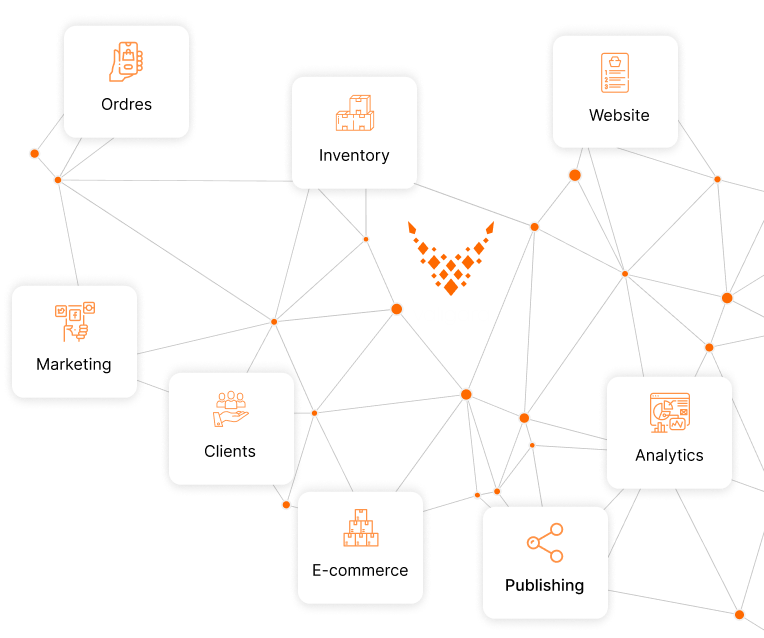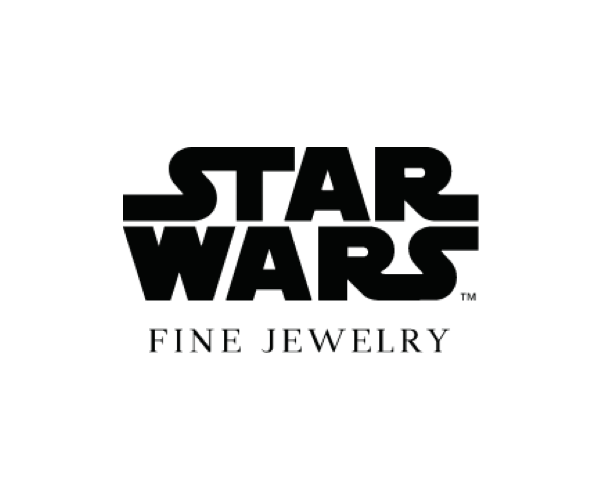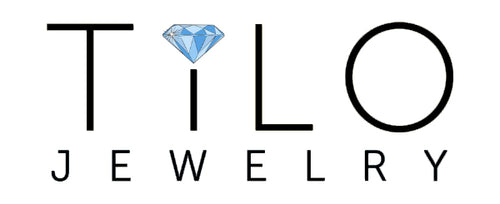The recent pandemic has accelerated the speed at which businesses are switching from offline sales to a predominantly online business model. Marketplaces like eBay, Etsy, Amazon, Walmart, and more are growing exponentially and expanding their operations across borders due to their newfound online haven.
The jewelry eCommerce industry has been following suit, willingly or unwillingly. However, jewelry sellers who embraced this trend early on and put some effort into the switch, have discovered unique growth opportunities.
Their secret? We believe that at the foundation of a successful jewelry eCommerce business lies a proper product information management (aka PIM) tool. Let’s explore why that may be the case.
Understanding PIM – The Basics
The way we present our offers online influences how often our product is viewed and how well it is received. Each channel we distribute the information, has its own specific requirements, such as:
- catalog or listing format
- pricing, descriptions etc
- arrangement of store products
- tags and keywords
- specific channel parameters
It is important to understand how to stand out on each of the marketplaces. More importantly, however, is understanding that, in the online world, the customer cannot physically see the product sold. Therefore, they rely completely on the content presented, like images and videos, product specifics, product variations, and more.
Online business is not about selling jewelry. it’s about selling the information about jewelry.
So, online, we are technically selling information, and this information is not only about the product. It includes company data, shipping and logistics, stories, descriptions, reviews, and more. That is why it is extremely important to manage all this information correctly, as it must serve both the seller and the clients, while enriching their experiences with the store.
Conversely, an improper PIM management can deter a customer from engaging with a store. Say, for example, you’re selling GIA-certified diamonds. Now let’s assume you left this information out for whatever reason. This would make your offer much less valuable in the potential buyer’s eyes. It would also make your brand image less trustworthy because details give the impression of transparency and, hence, create trust.
In essence, through detailed information you can create the right customer experience.
Also, the more accessible your information, the quicker you acquire a prospect’s interest and, eventually, his/her money. Think about it. When searching online, a potential buyer is ready to react and often to act upon the information they see. All a seller needs to do is meet the buyer’s expectations. For that, one should understand not only the buyer, but also the marketplaces and search engines, like Google, and what they expect from a listing.
PIM vs ERP – What Is the Difference?
Firstly, PIM – Product Information Management system – is not to be confused with ERP – Enterprise Resource Planning system.
The ERP system defines the workflows and processes of a business, from inventory to manpower. It receives information from all departments within a company, allowing for a full integration amongst them and facilitating the transition between the different workflow stages. You can consider ERP to hold most;y the internal data.
The PIM system is exclusively about product data. This information can be taken from one’s ERP system, but it can also come from other sources like stored files or external input. The PIM defines how your products are presented, to your internal and external needs. The PIM system holds mostly the external data.
It can then be used for a number of purposes, including:
- update your catalog
- optimize your offers / listings
- differentiate yourself
- meet the customer expectations right when they search
Essentially, PIM is critical for most fulfilment, marketing, and sales processes.
Product Updates
An important point to consider about online sales is the amount of product variations. Particularly with jewelry, we have multiple variables including sizes, metals, stone color & shape etc.
This can mean thousands, if not tens of thousands, of SKUs. Managing this large number of products manually is extremely laborious and inefficient. It further prevents us from reacting quickly to customer feedback, logistical issues, or regulation changes. A good PIM tool can help prevent these types of issues.
On top of that, jewelry industry best practices recommend updating product information, like listing titles, pricing, and offers, several times per year, because jewelry is a seasonal product. It is highly influenced by holidays (e.g. Valentine’s Day, Christmas, New Year’s, Mother’s Day, etc.), as well as other factors like A/B testing. To manipulate this information quickly and correctly, an automated system like PIM is critical.
When maintaining and updating product information, we should aim to meet 3 objectives:
- Maintain accuracy
Because we want to add plenty of details, we have more room for error as well. But with an automated PIM system, that risk is minimized.
- Facilitate data redistribution/reusage
When it comes to data distribution, we want to be able to push our listing to multiple online platforms and marketplaces. We want to be able to reuse the core product data, while creating / optimizing listings, in the format required by the specific channel. This is, again, another area where PIM is essential.
- Enrich data
For the third objective, a PIM tool can help support a company’s ERP system through enriching the product data and assisting in better decision-making. How, you may wonder. The data we use for our internal processes, like measurements, weight, diamond information, model, pricing and other product specifics, comes from our ERP system. This is what we start out with. This information then migrates to our PIM system, where our internal processes meet our external processes. However, to use this data externally, we need to enrich it and this is where a PIM tool can help.
Let’s look at some examples of this.
A PIM system can offer value to all business stages, from procurement to sales. So, if we want to make changes to our stock, on the suppliers’ side, the PIM system can request new purchases or changes. Similarly, in the sales process, we can change our pricing or catalog to better suit a B2B or a B2C request.
Product media data
Another important piece of data that we export is our media files like images and videos. These have to be optimized for each distribution channel/marketplace. So, for example, in our Valigara system, for every image you upload, you can specify different sizes or features, for each a marketplace or social media channel. Let’s say Amazon requires you to have a white background. Or you may prefer to add only branded images, promotional images, watermarks etc.
The Dynamics of Data
Many sellers assume that they can simply generate this product data once and then forget about it. That is not only ineffective but also a poor strategy choice. The online sales process should be dynamic. It’s something that continues to change all the time, based on customer feedback and external changes.
For example, when a seller receives a request for additional information, that is an opportunity to learn more about what the customer needs and what may be missing from our listing. Let’s say they ask about a specific material used in your manufacturing. By engaging in that conversation, you may learn about an allergy that some people have to that material, and may decide to disclose that information and update all your listings. So PIM cannot be a one-time deal.
PIM is also important for marketing purposes. We can simply redistribute data from our system to social media channels, comparison websites, other marketplaces like Amazon, or even on Google with the click of a button. Not only that, but many of these channels use our information in their algorithms for SERPs (search engine results pages) or PPC (price per click) campaigns.
This is not where the work with product information management ends, however. On the production side, we will need to use the product information to quickly generate items like production stickers, fulfillment requests, invoices, catalogs, etc.
We can also use it to integrate quickly with logistics and fulfillment carriers. This is especially important for jewelry, with all the legislation around gold or diamonds. We have to be very precise about the products we export or import.
On the post-sale side, we can use our product information to go deeper into understanding our business, by analyzing our product reports and our clients’ habits. We can look at how often they buy, what they buy, how much they spend on every subsequent purchase, etc.
So product information management is the foundation of one’s eCommerce strategy, that can help with all operations, from purchasing to listing to marketing and sales. It can work with our clients, our CRM, our orders management, and our analytics. By using PIM we can improve our offers and best practices, optimize data structure, and reuse our information in multiple ways with very little effort.
Structuring the jewelry data for growth
Let’s look at some more advantages that a PIM system can offer us.
- fast responses
Ability to react quickly is critical. An example is when some problems arise with the manufacturer of a specific product. In that case, a seller can quickly mark that product as “not for sale.” Another example relates to fields like titles, keywords, categories, and the like.
- testing data for sales/processes improvement
Test the data, all the time, everywhere. Sometimes, the changes in the product information can be more important than the information itself. For example, if I now lower my eBay price by 5%, how will that influence my eBay sales? Or let’s say I shorten my handling time from two weeks to one week. How will it influence my Amazon sales?
We can measure not only the product’s success, but also the interdependence between products and processes.
This allows us discover the “golden 80/20” – the specific combination of products characteristics , which bring us the best results. It is this dynamics of the information that can give us the biggest growth clues. Based on that, we can adjust our offers and catalog.
Product Information Management means creating the right data structure for our jewelry / gemstones / offers. How do we structure our product information for growth?
First, we can structure the data based on marketplaces / distribution channels. Each of them has different requirements, parameters, measurement scales, currencies (e.g. .com vs .uk), etc. Create these parameters in our PIM system , to control that the requirements are fulfilled.
- multilingual opportunities
Another variable to structure our data by is language. Multilingual stores are a huge opportunity, but also a huge obstacle, because going multilingual requires an immense amount of work. Very few jewelry businesses are able to expand in this manner, creating an untapped market of opportunities. So if you are able to go in that direction, you’ll have an advantage in your industry.
- touching your audience’s heartstrings
One more point to keep in mind when it comes to jewelry sales is that they are emotional products. We want to describe the products to elicit a specific emotion. We want those included in our product information. Assigning the jewelry positioning, emotion and occasion fields long standard fields like shape, adds more relevance and uniqueness to your products.
- regeneration and customization
We have to organize our data in a way that will make it easy to reuse. We understand that eBay, Amazon, Etsy, our website, our distributor, and maybe our physical store as well will require a different presentation of our information. But at the core, the product specifics are the same. Organize the data in a way so that we can easily duplicate from one project to another. We can map out the information that we’ll need for most listings, and then generate new information for each platform. And this process or regeneration and customization is the key to scaling.
- accessibility
One last key point for product information management is data accessibility. Many sellers forget about this, but being able to find the exact information you need when you need it is essential.
For example, if my distributor needs an updated information about my products every 5 minutes, I should be able to provide him with that. Or if a supplier needs to provide a vendor data about products that go out of stock, then this information should be available to them right away. So we need to organize our data effectively.
Conclusion
Overall, product information management is a crucial component of a successful online business. Not only does it facilitate a lot of the processes but it also can give you the answers you need to grow exponentially and stand out among the competition, particularly in the jewelry industry.
To ensure your PIM is serving you right, you have to focus on keeping your data updated and detailed, listening to your customers, structuring your information correctly and effectively, and making it easily accessible. By following these rules and keeping the process dynamic, you will surely be on your way to new horizons.





























